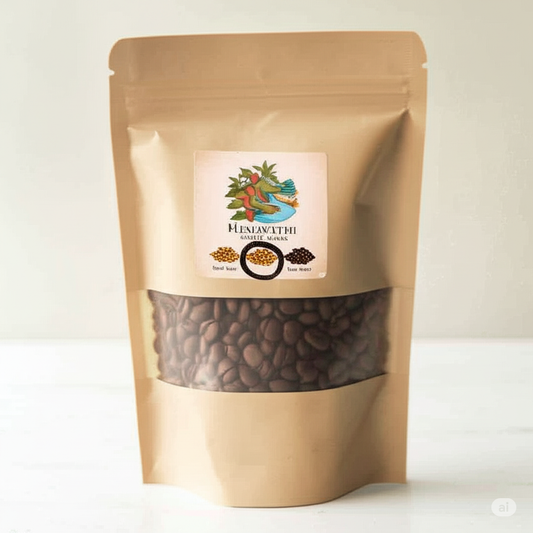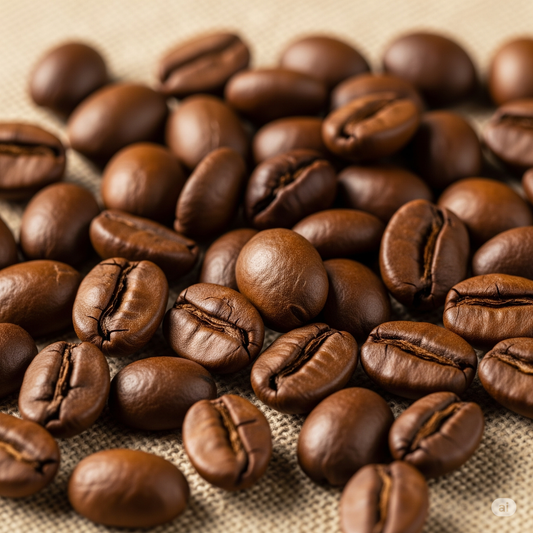Our Story
-

Generations of expertise nurture our Arabica plants in the Hemavathi's misty canopies and rich red soil, ensuring a legacy of smooth, aromatic flavor and gentle acidity.
-

Only the finest, hand-picked Arabica beans are selected, then meticulously dried, capturing the essence of our unique terroir.
-

Our small-batch roasting, infused with custom knowledge, unlocks the full character and freshness of each bean, offering light, medium, and dark roasts for every desire.
Products
-
Coffee ( 150 Grams )
Regular price $15.00 USDRegular price -
Coffee ( 250 Grams )
Regular price $25.00 USDRegular price
What do the options in checkout mean ?
Roasting
Roasting involves heating green coffee beans to temperatures between 370°F and 540°F (188°C to 282°C) in a roaster. As the beans heat up, they undergo complex chemical reactions—most notably the Maillard reaction and caramelization—that develop aroma, flavor, and color. These reactions also reduce the beans’ moisture and cause them to expand and crack, much like popcorn.
How Roasting Affects Flavor
The degree and style of roast have a major impact on how your coffee tastes:
preserve the bean’s original characteristics, including floral, fruity, and acidic notes. They’re ideal for highlighting origin flavors.
strike a balance between the bean’s natural flavors and deeper caramel tones. These are often smooth and balanced.
emphasize the roast itself, delivering bold, smoky, and bittersweet flavors. The origin is less distinct, but the cup is often rich and full-bodied.
A Matter of Taste
Roasting is both an art and a science. Expert roasters adjust time, temperature, and airflow to bring out desired flavors. A well-roasted coffee can showcase everything from chocolate and spice to citrus and berries—all without adding anything artificial.
In short, roasting is where coffee’s journey from farm to cup turns aromatic, flavorful, and truly enjoyable.
Grinding
Grinding means turning roasted coffee beans into smaller particles suitable for brewing. The goal is to increase the surface area so water can extract the soluble flavors efficiently. Coffee is typically ground using burr grinders or blade grinders, with burrs offering better consistency.
How Grind Size Affects Flavor
Different brewing methods require different grind sizes to get the right balance of flavor:
(like sea salt): Best for French press and cold brew. Allows for slow extraction, giving a smooth, full-bodied taste.
(like sand): Ideal for drip coffee makers and pour-overs. Balanced extraction and flavor clarity.
(like sugar): Perfect for espresso and stovetop moka pots. Quick extraction delivers intensity and crema.
(like powdered sugar): Used in Turkish coffee for a thick, rich brew.
Why It Matters
If your grind is too coarse, the water passes through too quickly—resulting in under-extracted coffee that tastes sour or weak. If it’s too fine, the brew becomes over-extracted—tasting bitter or harsh.
Freshness Counts
Grinding should be done just before brewing to preserve aroma and flavor. Once ground, coffee loses freshness quickly as it reacts with air and moisture.









